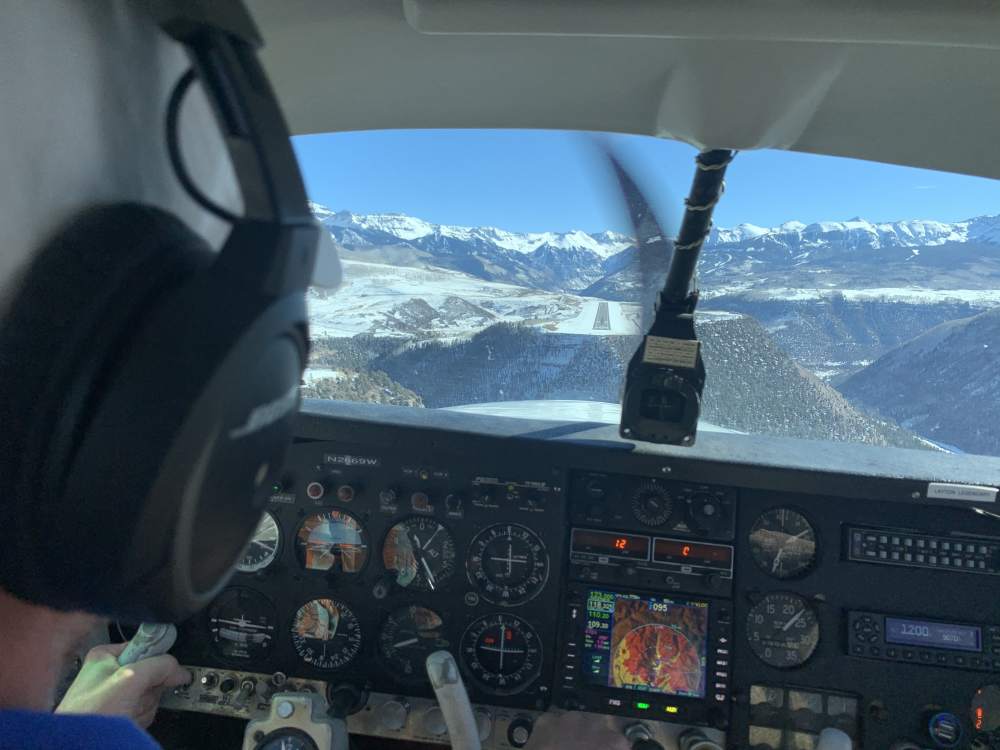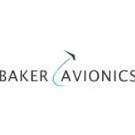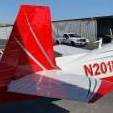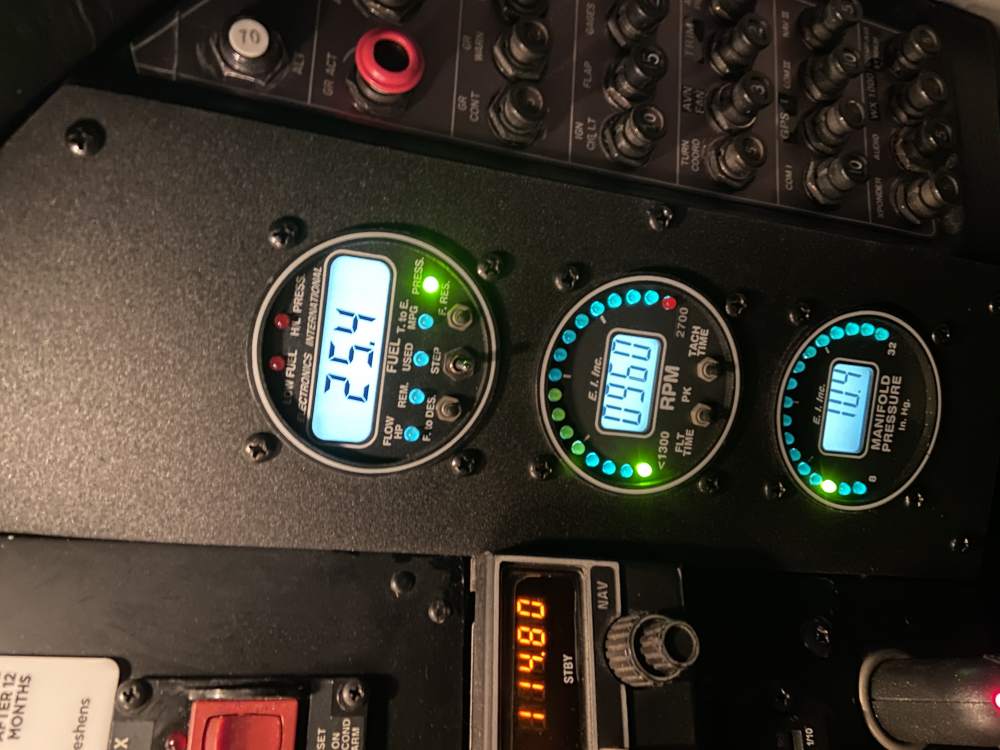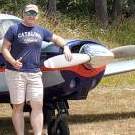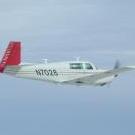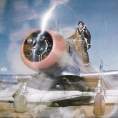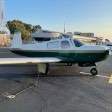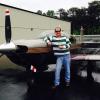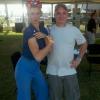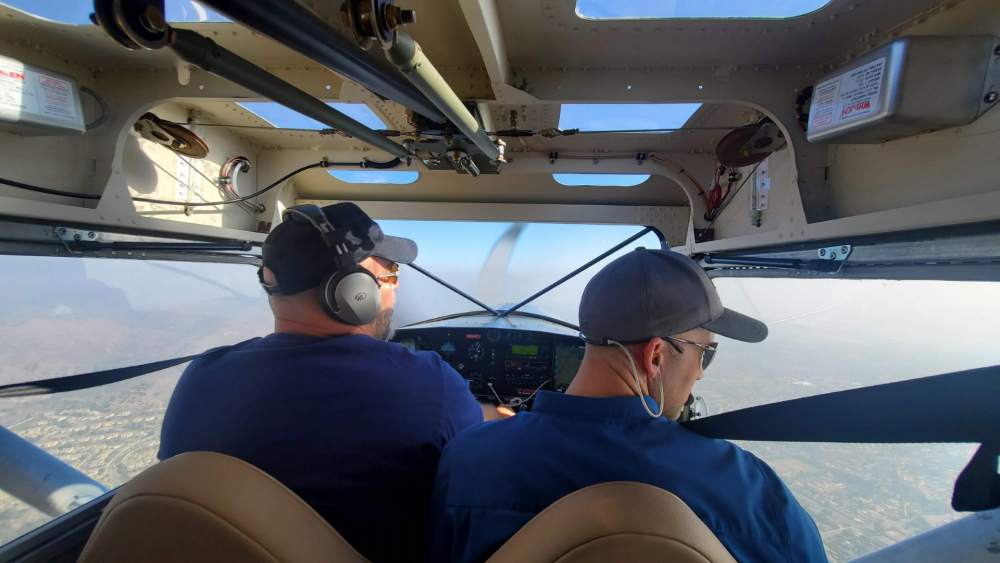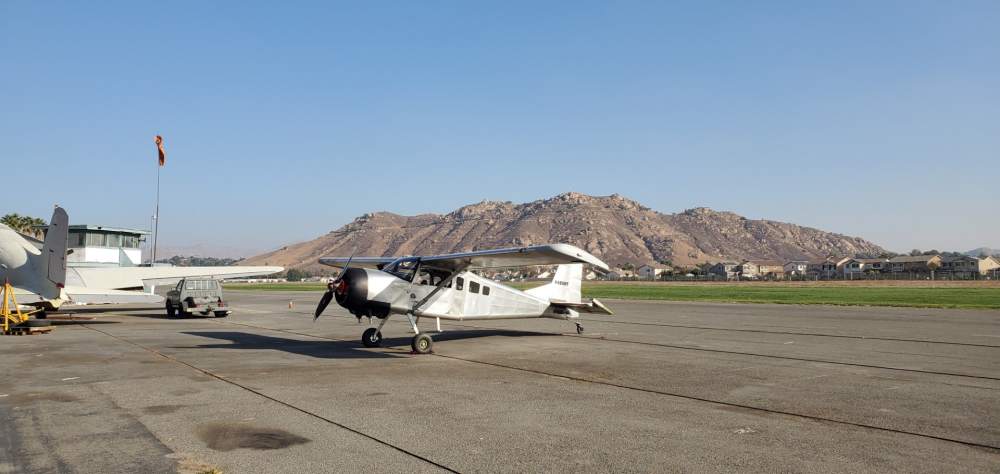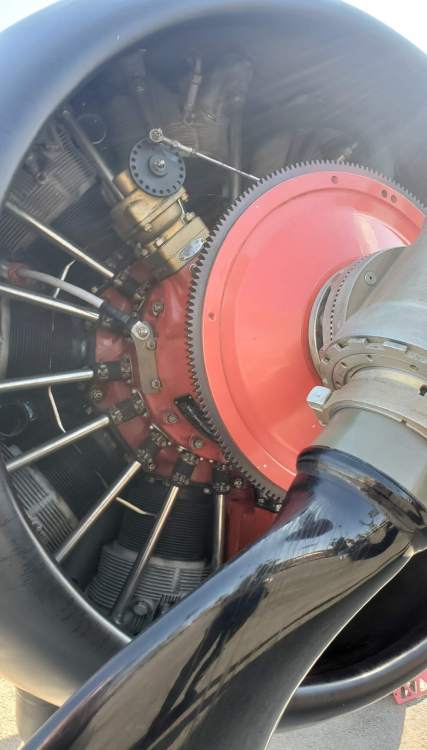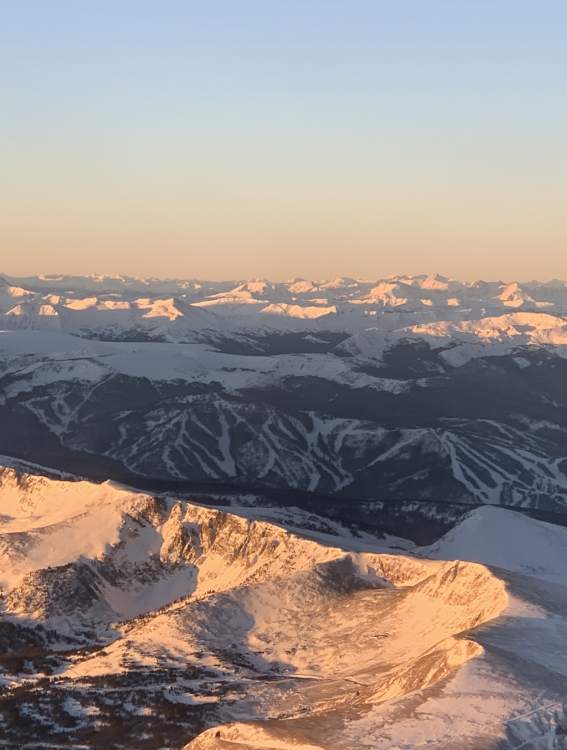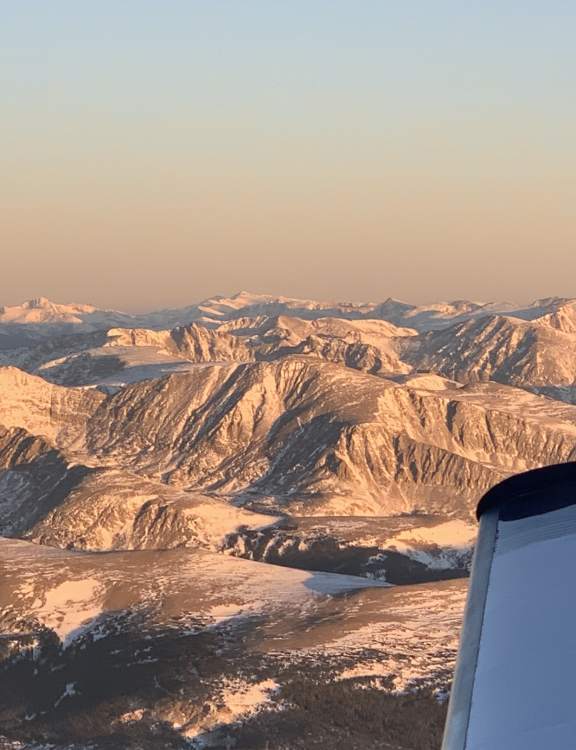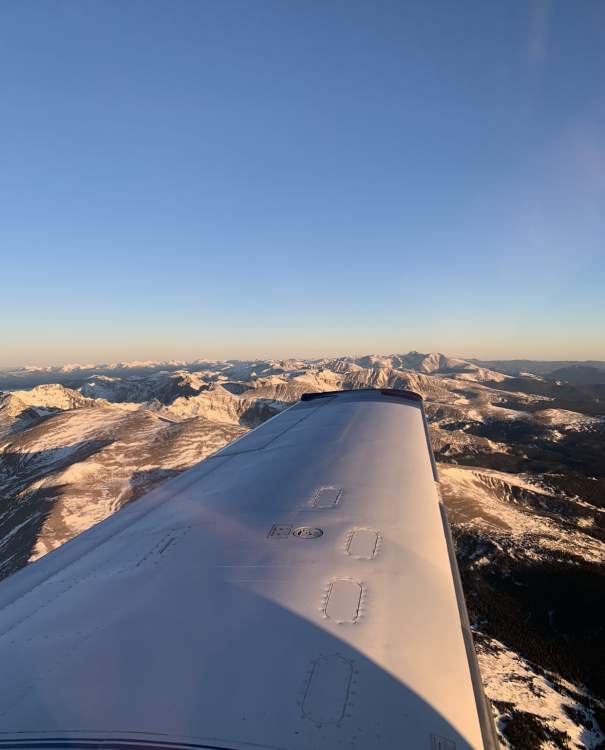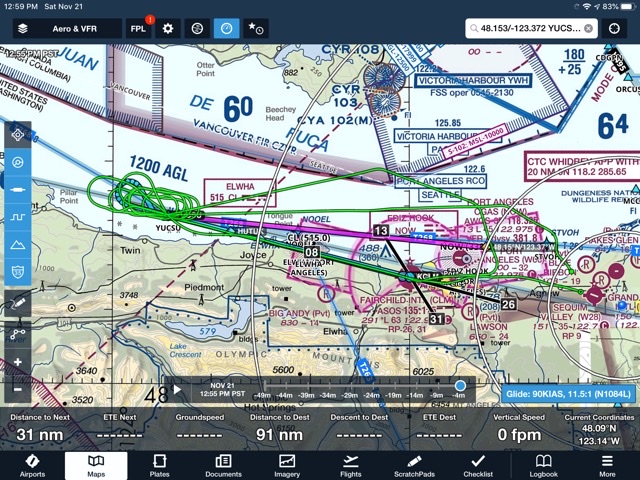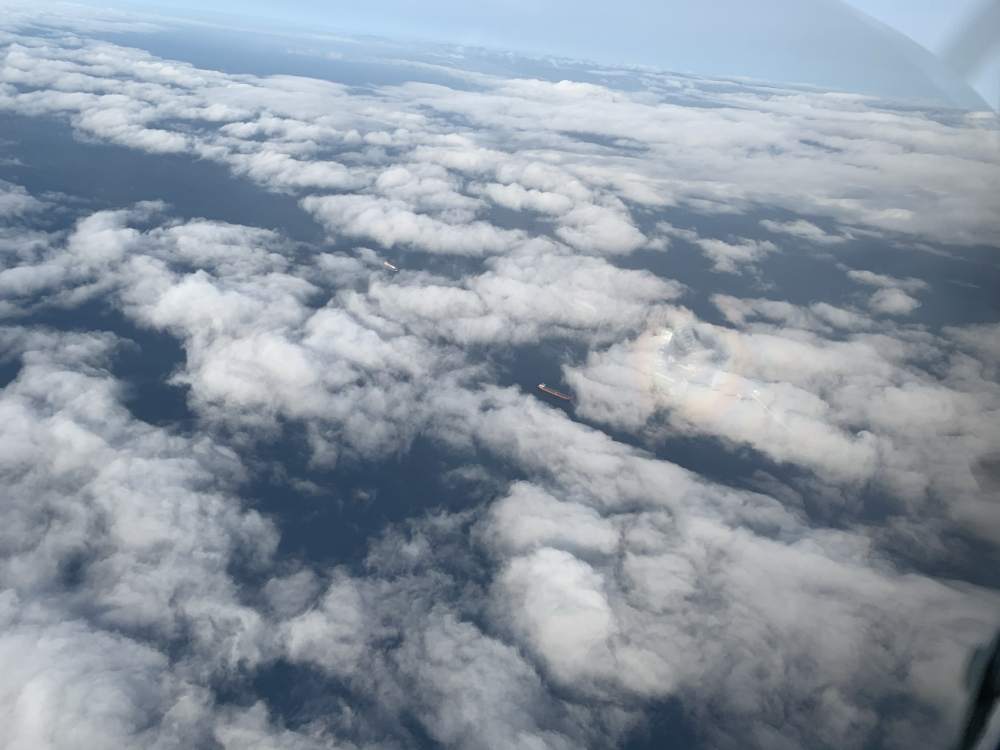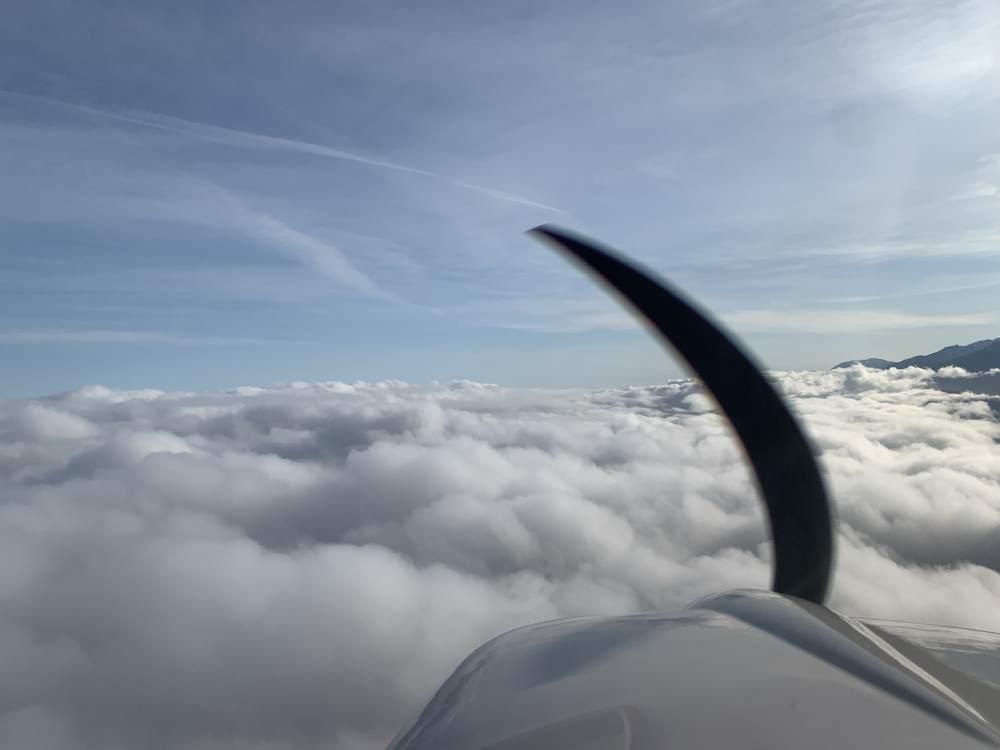Leaderboard
Popular Content
Showing content with the highest reputation on 12/01/2020 in all areas
-
I ran across this video and I think he did a really good job of explaining the effect of different air/fuel ratios on engine operation.5 points
-
You all have seen the video of Harry Moyer here flying his Mooney on his 100th birthday, right? Stop complaining5 points
-
There is a standard procedure by which yiu"swing" and calibrate the GMU-11 requiring an initial heading of 360 + or - 5 Deg and having it line up on that heading. If engine vibrations are mowing it around too much it will fail that initial lineup and you may have to shut the engine down and then restart for the 360 deg swing with stops every 15 degrees or so. It is tedious and can fail if not done well. I had mine mounted where the old HSI magnetometer was located - almost midway on the left wing. It is perfect without any deviations!! What you describe is either a poor install, interference, calibration or unit.4 points
-
Regardless of mods absolutely make sure there are no SB 208 corrosion problems. Further it is worth every penny to have one of the big name Mooney Service Centers do your pre buy inspection. I personally would not buy any Mooney unless this was done. My opinion on mods after 700 hours with a J that came stock with most of them is: Speed brakes — Great fun and totally unnecessary GAMI — No benefit on Lyc IO 360 Brackett Air Filter — No big deal, saves a bit of maintenance, cheap. Sounds like a few guys have forgotten they are even an STC. Bladders — Religious argument with Mooney owners, I installed them in my 97. Install is only simple if you are lucky and I was not. Weight penalty is 35 lbs I think, not at home to check just now. Bladder to bladder tubes tend to leak until you double clamp them. Filler caps are very cool looking but you lose your wing fuel gauges if installed. They are not bad to have but you can do a LOT of reseal work for what they cost to install. Big names in tank sealing have good records and a warranty. One piece belly — Nice for your shop but installation will not pay out even at $100+ per hour shop time. No disadvantages. In fact, I think the answer in general is there are not any STC I can think of that are either “essential” or ruin the plane. A more important consideration perhaps Is to buy a plane with an autopilot you want to keep. They are very expensive to retrofit and one that either does not work properly or meet your needs will make you sad every time you fly.4 points
-
I learned a valuable lesson yesterday and want to pass it along to others. Practice your emergency procedures EXACTLY like you plan to do them in real life. My plane is a 64 M20E with electric gear. At every annual, I practice my “Manual” crank the gear down routine two or three times. I have always been too chicken to actually try it in the air and maybe screw something up resulting in an unnecessary gear up landing. When I practice, during annual on jacks, I'm always worried that I'll forget to pop the circuit breaker (the one down by the crank) and have the system come alive part way down and spin the crank, break my wrist and maybe really screw up the crank system. Well, yesterday I learned several things about my Emergency hand crank gear-down system and my self training. I had a real gear failure. It started with an alternator failure and a 3 year old battery. I had been out just tooling around the local area at low altitude for about 30 minutes when my alternator failed. My JPI 900 did a wonderful job of getting my attention by blinking “Voltage” and the red warning light on the panel. As soon as I noticed the warning, I saw that my ship voltage was at 11.7 and about every 10 seconds it dropped another 0.1 volts. I was about 10 miles from the airport, so I turned for home, and with the voltage at 11.5 volts, decided I should get the gear down early. Switch down, Amber “up” light goes out and I can feel the gear actuation in my seat, but then it stopped and the Green “gear down” light didn't come on. It REALLY does take some period of time for you to accept the fact that this is for real. I just stared at the panel lights for a while. Then I cycled the gear “Up”, but nothing happened. Then down again, and nothing. By now I was approaching the airport (uncontrolled field), so I turned away from the airport to sort things out. My altitude was only 2500 MSL (1700 AGL), since I had just been out sight seeing. So here's the lesson I learned. When in the hanger on jacks, in nice lighting and no severe clear sun shinning in on me with the one hour before sunset glare, I could always easily see the circuit breaker and the funny little red “almost a knob” gear engagement lever. It was never a problem to see them or to reach them. Just like the fact that I have one of the famous plastic pipe fuel valve selector tools, because when you are actually flying, you have to be a contortionist to reach the valve selector, so goes the gear circuit breaker and crank engagement knob. I didn't realize until yesterday that every time I practiced, I was not strapped into my seat, and I had the seat pushed back to give me room. A whole different deal for a short guy like me while actually flying the plane. I for the life of me, could not find the circuit breaker with my finger tips. I finally got my flashlight out, and used it so that I could see down there. The sun was so bright outside the cabin, that I simply couldn't see it. Also, it took several tries using my left hand to successfully pull it out. Same went for the Red crank knob. Pulling it out with my left hand was quite difficult. I realized that I had always leaned in from my comfortable position of seat pushed back, and my rear-end scooted over six or 8 inches from the left wall. I had actually been reaching in with my right hand which gave me a much better angle to grab the breaker and the knob, and I am right handed so that helped too. By the time I got the breaker out, and the knob pulled and then pushed forward on the arc, I discovered that the plane had gone from straight and level to a 15 degree right bank, and that I was in a descent and had lost 400 feet. I was now only 1300 AGL. I returned to the airport and did a 200 foot low pass so the lineman at the FBO could confirm I had 3 wheels down for whatever that is worth. The green "Down" light did not come on, as it never does even in practice on jacks. When I disengage the crank, and push in the circuit breaker, the motor runs for a tenth of a second to tighten everything up, and that last 1/16 of an inch makes the down limit switch. So, I was pretty sure the gear was down, but it was reassuring to hear it from someone who could actually see it, even if it was not "locked down". I shot one of my best ever landings with a 7kt crosswind gusts to 12. Not skill, just the right gust at the right second before touchdown. My takeaways and suggestions to others: Practice EXACTLY like you plan to do it. In this case, that means with my seat-belt on tight, and my seat up close exactly the way I fly. Or, plan to move the seat back, and why not use my autopilot with altitude hold?? Never thought of it, because I didn't have a checklist and never practiced doing that. Why did I not climb to 3000 feet then mess with it?? If I want to reach it without seeing it, then practice that, and use the hand you plan to use. Believe me, it makes a real difference. Kind of like that first car date a million years ago I learned something yesterday that I think will make me a more prepared pilot in the future. Hope this long winded story is helpful to others. -mark3 points
-
Exactly right ^^^ Anything rich of peak is cooler than peak. Anything lean of peak is cooler than peak. The difference is, if you are rich of peak, you are putting $$$ out the exhaust port, if you are lean of peak you are putting air out the exhaust port. I'm sure most people think lean is hotter because they always operate rich of peak, in which case leaner is hotter, until you go over the peak and then leaner is cooler.3 points
-
I personally won't recommend a normally aspirated 200HP Mooney even visit MMJC. I haven't visited this airport myself, but I had a local friend fly in there in a SR20 and had one of those never again moments he'll never forget much like @cliffy described flying out of MMH. I have used both the higher Toluca MMTO airport 8466' and lower Puebla (MMPB) 7361 - both with much longer runways. Of course, if you pick the day and time carefully and watch your weight of course it can be done. There is even a flight school at Toluca. But sure don't get much choice visiting from far away and if you're based there its easy to get tempted to use the airport in conditions that you'll wish you had the benefit of a longer runway. As Cliffy said, its not getting airborne that is usually the problem, (but be sure to master the 70/50 rule), its climbing out in the high density altitude that is the real challenge. Add in some unexpected turbulence, down drafts and it more than just "dicey". I've done Mammoth mountain (7135) probably over a 100x time in our Turbo Mooney, summer and winter, keeping an airport car up there and being a season pass holder, and I always cringed when we had to take off to west because of the terrain and required maneuvering early in the flight even with the turbo performance.3 points
-
3 points
-
You guys are over thinking this way too much. just stick the tube in your mouth and suck real hard then stick your tongue on the tube. If that circuit is leaking, the tube will fall off your tongue in short order. If it is good, it will stay stuck forever.3 points
-
3 points
-
Just wanted to take this time to review my experience with my Avidyne IFD440 so far. A few weeks ago under supervision and with a premade and tested harness I installed an IFD440. On the ground everything tested good so I started flying it. It quickly became apparent that the radio was not receiving properly and the transmit was very weak. The antenna and antenna cable had not changed so I was confident in those. With my IA we started troubleshooting and checking all the wiring for a lose ground, or maybe a single strand of rogue wire. Nothing. Everything checked out. We then re terminated the antenna cable and tested that. Same results. I had a small trip planned over the weekend and chose to proceed as planned. The radio DOES work, just not well. About 45 minutes into an hour flight I tried tuning the ATIS at the destination airport. The ICOM came in loud and clear. The Avidyne, with the squelch button pressed was only static. I rebooted the Avidyne and when it came back the atis was working. It was a bit noisy, but working. On the ground I swapped the 440 with a Garmin 430 in a friends airplane and had him test it without telling him my concerns. On my side the 430 worked just fine. On his side he reported the com tx seemed to be a little weak and the recieve was noisy. I take it back home, download the logs off the unit, we go through all the wiring AGAIN and find nothing, so I call Avidyne. Avidyne owner support transfers me to dealer support as they don’t have a lot of troubleshooting tips. - fine. I talk to someone there for about 2 minutes before our phones get disconnected. I try for the rest of the week to get ahold of someone without success. Finally I submit a ticket with the logs. (Which show a large number of VHF card errors) I get a response saying they will only deal with the reseller (who is currently out of town) and not me or my IA. Nobody will call me back or talk to us. The unit was advertised as being installable with an IA signature, but Avidyne will not support me or my IA. They won’t even tell me what they think they found in the logs, only to have an Avidyne dealer contact them. It’s been 3 weeks since we installed this unit and I’m very close to pulling it back out. I was pulled in by the seemingly good support I found in the forums and online, but when a real problem occurred out of the box, that all seems to have disappeared. A bit out about me, I’m an experienced engineer who troubleshoots RF devices every single day for a living. I’m very unhappy with this product and the support I’ve gotten. I’m open to additional troubleshooting ideas, but it is pretty clear to me this unit is bad out of the box and Avidyne support is not helpful or easy to get ahold of. I do not recommend these products.2 points
-
Chris where are you located? If you are on the west coast, maybe you can swing by and see if we can help out.2 points
-
This thread makes me pause because it was Bennett who started this thread, and Bennett is no longer with us. Those that don't know, he passed, of natural causes. So here friends, is to our missing friend Bennett. He is missed. Erik2 points
-
I've been reading Prof. Heywood's textbook Internal Combustion Engine Fundamentals. Lot's of fascinating stuff in there. Combustion is a pretty complex phenomena. It's not so much that the air acts as a coolant for lean mixtures but the fact that there isn't enough fuel present to burn all the oxygen. This means that the engine is putting out less power than at richer mixtures and so there is less heat. The excess oxygen ensures that all the fuel is burned and this is what causes the increased fuel efficiency (in rich mixtures, the unburned fuel goes out the exhaust and is wasted). Skip2 points
-
@Ryan ORL here are some of the things I looked for when I bought my J in 2013 and some of the ones I wish I had known about: If you are traveling in it, a working 2-axis A/P is a "nice to have". Travel a lot and it becomes a "really nice to have". WAAS GPS. No airframe corrosion. Frequently flown engine. "Frequently" varies with people, but not a hangar queen. More important to me than low time and not flown. Many of us will take an almost run out engine flown 120+ a year over a low time one flown 10 or fewer for the past couple of years. In Lycomings, corrosion kills 'em. Removeable rear seats. With two people up front, you can load anything you want in the back. The 2900 MTOW year or newer. Mine is 2740, and while 160 lbs. does not seem like much, for those times you want to have more than two people, full fuel, and some baggage, it makes the difference between Go,NoGo, or Go a short distance and refuel. As you alluded to in one of your posts, avionics close enough to what you want to not need to do a rip and replace on the panel and center stack. And for my "if it has it, okay; if not, okay as well" list: Speed brakes. I have them; I use them. Would have bought my plane if they were not there, but they have come in handy at times. New-ish paint job. Sort of falls under the "No airframe corrosion" above. You don't have to love the paint job, but if you really hate it, for probably less than $20K you can have it redone. Great glass all around. For me, it goes with the paint. When I have mine painted, it will get new glass. New interior. Again, something which can be personalized. Mine was...different when I bought it. Currently undergoing repair and upgrade. Can farm it our for anywhere from reasonable to outrageous sums of money. I am currently doing all leather seats, recover glare shield, new carpet and sidewalls, and repair/replace/paint all interior plastic myself in mine. When done, I will have less than $10 AMU in it. A M20K down the way had the same done by a high-end shop for a little less than $30 AMU. Tank bladders. They solve ever having to have the tank sealed, but you do give up about 35 lbs. This would be where the 2900 MTOW would really help out. And then there are my non-negotiables: Full disclosure by the seller of any major repairs. Should be in the logs, but some times they are forgotten. I really didn't care if it was bellied into a wall, but I wanted to know the repairs were documented. (Got burned by this when purchasing my C172.) All logs. (See #1 above). Clear (or able to be cleared) title. In, or able to be in, annual. I am sure there are many other items people will add, but these are what I used - or should have used - as my guidelines in buying my J. The only other item I would add for you is a hangar, since this one will live in Florida. Good hunting!2 points
-
2 points
-
yaw damper operation works great, was surprised how much difference it made on our long body, have no regrets2 points
-
Issue Solved, this is the reply I got from JPI. EDM 700.800730/830 factory reset. Power the EDM up and let it go through the self-test and if asked to fill fuel tap step buttons a couple of times to clear it, hold both buttons down until you see program then release the buttons tap step or next to advance through the settings, write dow Hobbs, Tach, K-factor, GPC-, etc settings continue tapping until you see end but do not end, hold both buttons down until you see factory then release buttons, tap step or next to advance through settings, write down Main, Aux, ENC, etc, continue tapping next until you end program. Now is the time to download your flight data if you want to save it. If you have fuel flow put the external switch in fuel flow position. Now get back into the Factory Limits and the first setting is FAC ? N, tap LF button to change to Y then tap step button, tap LF button until you see (Config and Data) 730/830 only, then tap step button, EDM will now reset itself a couple of times, once done resetting, go back into the Program and Factory Limits mode and re-enter your previously recorded data. If this does not fix your issue then EDM will have to come back to JPI.2 points
-
The PSI rating DOES matter. We just had a similar issue on the Dynon Skyview HDX system and is relative as to what voltage the sensor is putting out because the G3x system is looking for "XX VDC" so if the 150 is only showing "20 PSI" by getting the 75 PSI rated one WILL fix the issue because it is showing 1/2 of what you are wanting and once you get the properly rated PSI sensor, it will read correctly because it will be 1/2 of the rating and will give you 2 times the reading as it will vary proportionately. However, there is a setting you should be able to change to make it read correctly as that is a Garmin sensor and if you read on the shoe tag on the sensor, you will see the PN and it should be in the settings selections for that sensor and once you change it, it will be just fine!2 points
-
14 and round Nothing sounds or smells quite a good as a radial engine in the morning Everything else is a car or boat engine.2 points
-
Yup just do the Alpha belt. I bought it after the second time I completely ripped my finger apart on final. I was tired of the adventure of trying to land with a mangled hand. It sucks that it's $400 but better than bleeding out while trying to land an airplane one handed.2 points
-
Yes - I had an am safe seatbelt system installed just over two years ago. Actually I was very pro-actively interacting with the company even several years ago trying to get them to extend their stc to cover my airplane since they do have an stc for M20K and through the more modern airplanes but that stc doesn't cover all the M20k but starts at a certain serial number that is just after mine. Anyway they eventually came out with an entirely different seatbelt product which is the one we are probably talking about here, that is the one installed in my airplane. It is a more universal product less specialized to the specific airframe. Anyway, I was one of the very earliest to install that stc and I placed my order before it was even available. It was installed by Weber aircraft at KLNS. It looks and feels like a modern seatbelt and the auto-ratchet is nice as compared to the fixed length system that it replaced. But comfort was not the main point. The peace of mind that it is there just in case is the point. I am a firm believer in airbag seatbelts in general. That some crashes might be survivable if only ... its a statistics game but I am a mathematician so I believe in doing what I can to stack the deck in my favor as much as I can.2 points
-
Went by Sedona yesterday. Yet another pic showing how the airport is situated. A lot of people that visit Sedona don't even know it has an airport, even though it's essentially in the middle of town.2 points
-
Heat outside air parking brake carb heat Just a PP guess... -a-1 point
-
In that case I guess pilots are expected to observe where the lines are when the green light illuminates under normal conditions, and crank to that spot. Again, in a perfect world, they would be exactly aligned from whatever point of view the pilot has while cranking, at the point where the over-center preload torque is at spec. I'm sure in most cases it's reasonably close. If not, it's still unlikely the gear are going to collapse on a normal landing. It's just not "locked" in accordance with the service manual spec.1 point
-
After fueling and a long taxi I was lined up behind a Embriair waiting to depart. I needed to cross 27. A beautiful Cessna taildragger was ever so slowly approaching. It appeared to be frozen in space. I enjoyed every second of it, but thought the passenger jet front seats were probably eye rolling.1 point
-
NO is always an option to ATC. No matter if its a Mooney or Boeing. You're the Capt of the airplane and its their job to separate traffic nothing more. If you can do what they ask without putting yourself in ANY jeopardy great do it. If not NO is a legal and safer response. Don't think its relegated to just small airplanes. I've had "maintain 210 to the marker" in 300/ 1/2 blowing snow in a 737. Can you guess what I told them? We all talk about a "stable approach" yet we all fall into the trap of "keep the speed up" Its one or the other. Take your pick. Now if you are in a 172 and doing 75 mph on a 5 mile final at a busy airport then YOU might want to rethink what you are doing like get more training for the situation at hand. Remember its their job to keep traffic moving ( Pushing Tin, old movie) its your job to keep the airplane safe INSIDE your comfort zone. Refer back to 91.31 point
-
I check the floor indicator on short final and the end of the electric gear down sequence. So I know what it should look like as far as line and things lining up with markers should I need to go manual.1 point
-
1 point
-
1 point
-
That's the bayonet ring probe. That's weird, I would have figured a 930 install would have included all probes of the same type, and it looks like they took the factory probe out. I think that could mess with your temperature readings, since there's now an empty space where the factory probe was?1 point
-
There is an O-ring on the back side of that. There is a number on the front. Get the number on the front and order a new one. Fly the tank down. No one will recommend a hot swap of those but if you are fast you will spill no more fuel than a bad day at the fuel pump. The are not to be cranked down on or you will be in a world of "oh no" and have a torque value associated with them. Fire extinguisher/ don't do in the hangar. Don't smoke. Closed driver on professional course.1 point
-
You won't have any trouble when its calm, cool, and with weight left behind. But operating safely in the mountains is so very much more than takeoff roll!! The real issues come after liftoff.... where is the air rising, sinking, what is the gradient to accelerate to a reasonable climb speed.... what are the escape options? What if you must choose between a tailwind or rising terrain? How willing are you to not go until the next morning? Have taken my Mooney into TEX....what fun. Departed early AM, no issues.... have also operated into TEX commercially in all kinds of weather. In an airplane full of excess thrust and drag, beautiful things in the mountains. Two big PT6's when you only need 1 to fly and clear terrain, a beautiful thing. Our Mooneys are not in that league, but it can be done safely, carefully. I sure as hell would not want to be flying a PA28 wing into a place like that.1 point
-
They are wedded to what the airframe was designed around. To do some other power plant would require new mount, cowling etc. I don't think a lot of kit builders are down for that.1 point
-
It feels like the insurance companies are hooking us all in the relief tube . . lol1 point
-
On speed brakes, you might be interested in @donkaye's thoughtful article on the subject here.1 point
-
From what it seems like the ray jay turbo seems like a relatively cheep option compared to the the cheapest stock turbo Mooney (231). I also think you control the waste gate with the knob on the right, and determine if you want to use the turbo or not. I believe @N201MKTurbo has one. So does @M20F. They can chime in with maintenance and info on it. As far as density altitude goes, if you're gonna be a at 8200ft, that means DA's above 13000ft shouldn't be out of the norm. The Mooney's I'd consider are either an Ovation/Eagle with the 310HP conversion, or any version of a Mooney with a turbo, be that a 231, 252, Encore, bravo, acclaim, or a TN conversion.1 point
-
I have a piper too and I do prefer the vernier controls. Much easier to fine tune.1 point
-
MMJC Great question. I don't plan to be at MTOW always. Probably 3-5x per year with my wife and son and for that I would plan 2-hour legs at the most so probably not needed to have the full 1K Yep, the airport is like Sedona. Nowhere to put it after the runway ends. Do you know how this impact maintenance and overhaul? I'm not very familiar with Rayjay turbo and everything I find is old.1 point
-
I have a stack of them , One in good condition is 150.00 ( the firewall finish off piece ) , I have an airbox ,but I still have to pick it up , probably another week..1 point
-
The manual has examples in how to grade fuel leaks. This wouldn’t qualify as an airworthiness issue. It’s also pretty easy to fix. -Robert1 point
-
Getting old sucks. I am, sadly, starting to pick up what is being laid down. FIDO everyone. No one gives a crap about others aches and pains. I have learned to be stoic with my family... Sumping, Climbing in and out, towing in and out, changing fuel selector (on vintage), reaching over seats to grab something... Joints remind us that the reaper lurks ahead and the road is not as long as it was 10-20 years ago... Alternative to pain and discomfort is not good. No Mooney and... Gulp...1 point
-
Does your screen show OAT? What was the OAT? I think your rocket is ~5 knots faster than mine at that altitude but I have always blamed my tks for stealing about 5 knots.1 point
-
Wednesday I had a rare day off and my wife and I headed to the airport to fly the Mooney on a burger run. Instead we ended up going for a ride in my friend's Murphy Moose. My first time in a tailwheel and first time landing on a grass strip. It was awesome! More photos, videos, and the write-up on my blog. You Fly, We'll Buy1 point
-
1 point
-
I can only speak of G5 and GMU 11 combination, on the G5 they have a magnetic interference test for the GMU-11 that you run during installation. The magnetic interference test has you move various flight controls and also has you cycle the various components of the electrical system. It's about a 8 minute test or so it seems to be pretty through and sensitive . I am surprised that the installer didn't pickup on the magnetic error during the test, if the GI-275 uses the same test. You may have to relocate your GMU-11. The G5 had you do Magnetic survey before installing the GMU-11 permanently in the survey. I had mine too close to the Step and elevator pivot point and it failed I relocated about 10" away and then it past. So in total there is 3 tests/check(s) for the GMU-11 when paired with G5's 1 is the Magnetic survey, Magnetic interference , Magnetic calibration. Good luck in getting this resolved. Hope this helps, James '67C1 point
-
1 point
-
I suppose I should put up a pirep. The bike I got, which was the cheapest aluminum frame bike on Amazon (called Murtizol), weighs about 25 pounds and cost $270. It fit just fine in the luggage bay of the Mooney, unfolds easily and rides fine. It was more than enough for me, since I just want to ride into town. That said, my bicycle riding muscles went about the same time as my girlish figure, so I dusted off the big bicycle at home and am riding it in on days where nothing falls from the sky. Makes quick work of my 3 miles commute. I'll keep this up through the winter and should have my bicycle muscles back by Spring, when it'll be time to take the little bike exploring.1 point
-
Put the Medeco door and baggage locks on it with foil shades on the windows if it has to be left outside for any reason. They would most likely move on to the next airplane. If they use a crowbar to get in it was probably for avionics rather than to steal the airplane.1 point
-
The Swift STCs are not cheap: $350 is not an uncommon number. It's too bad that neither EAA or AOPA is involved in these STCs. If they were I would hope that they could negotiate lower costs. $350 is cheap barely registers on the aviation scale. My opinion only.1 point





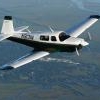
.thumb.jpg.ae084ff98f2eda1b3f595ed45b9592c9.jpg)


